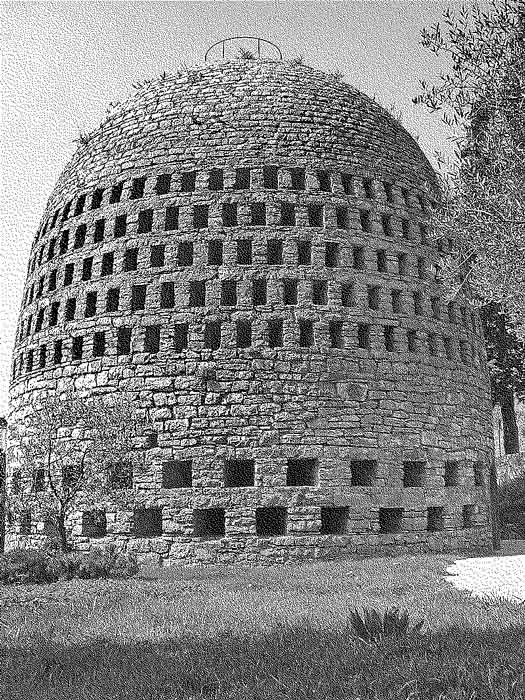
Air wells are heavy stone masonry structures designed to collect water by condensing moisture in the air overnight.
Wells of this type, sometimes very old, have been discovered in several places around the world, but the best known in France is that of Trans-en-Provence, built in 1931 by the Belgian engineer Achille Knapen and which measures 9 meters high. (picture).
The history of air wells was written by Paul-Jacques Grillo (1908-1990), a French architect, urban planner and designer in the book What Is Design? published in 1960.
Grillo describes the operation of these systems as well as their estimated performance in producing drinking water.
It turns out that the massive air wells it presents are, however, less effective for the condensation of air humidity than those implemented today, through lightweight condensers.
For the first time, this text by Paul-Jacques Grillo has been translated and published in French in l the anthology that I edited on the history of low-tech published by T&P Work Unit.
If you want to discover the history of air wells and low-tech techniques for producing drinking water, this text is a remarkable introduction.
The book An anthology for understanding Low-Tech, with an afterword by Philippe Bihouix, is available in bookstores near you.
It is also available on order from the publisher.
Image: Wikimedia (Michel Royon)